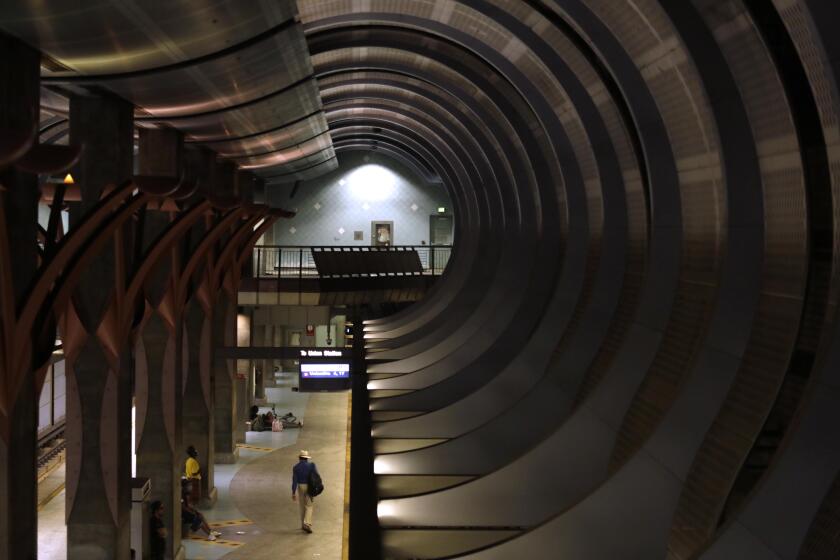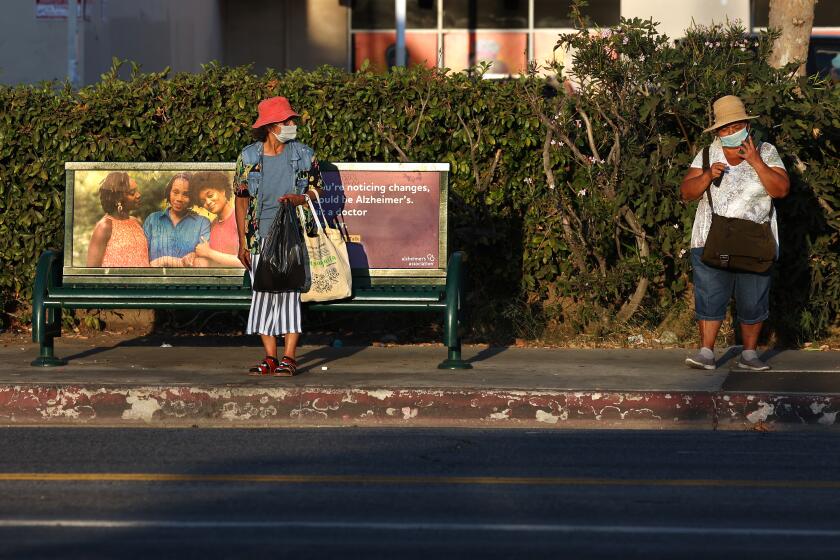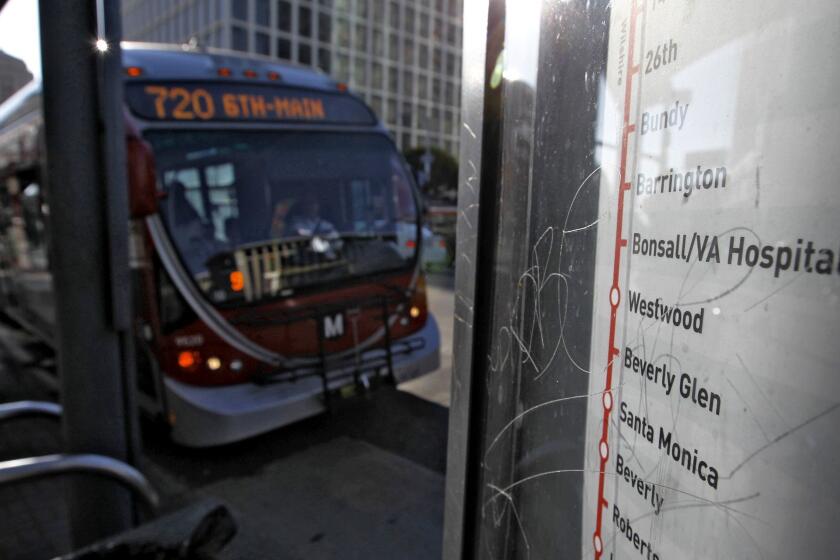Editorial: Can Taylor Swift fans save public transit? Maybe

- Share via
All the doomsday talk about a public transit death spiral? Shake it off. Because fans going to Taylor Swift’s concerts are fueling a city-by-city transit boom that points the way to reviving slumping ridership by improving service for leisure travelers and non-9-to-5 commuters.
Cities across the country have seen ridership surge from “Swifties” choosing to take transit to the star’s sold-out Eras Tour. In Atlanta, nearly 140,000 people took transit to see Swift perform over three nights — that’s triple the normal weekend ridership. In Chicago, the concerts generated 43,000 bus and train trips, and the system had the highest weekly ridership in three years.
And when Swift comes to SoFi Stadium in Inglewood for six shows starting Aug. 3, the Los Angeles County Metropolitan Transportation Authority will add service and extend hours to accommodate some of the estimated 60,000 fans expected per performance. Metro will run shuttles to the stadium from select stations on the C line between Redondo Beach and Norwalk and the K rail line between West Adams and the LAX area. Trains throughout the system will run until around 2 a.m., rather than the usual midnight stop time.
Disorder, rising crime and declining confidence not only pose an existential crisis to the Metro system but also to the region’s climate, sustainability and livability goals.
The goal is to meet the tremendous demand concert-goers have demonstrated in other cities and woo more Angelenos and visitors to public transit for their social and leisure travel.
Big-city transit agencies have traditionally designed service for 9-to-5 work commuters. Travelers outside those peak times, including people working night or weekend shifts, picking up kids from school, going to a midday doctor’s appointment, or visiting friends on a Saturday or Sunday, had longer — sometimes much longer — wait times than rush-hour riders.
That model disadvantages non-9-to-5 workers and people who rely on transit as their only mode of transportation, and it was already being reconsidered before the COVID-19 pandemic. Metro, for example, planned a major overhaul of the bus system to provide more frequent, reliable service throughout the day and on evenings and weekends.
What should be a simple, basic amenity of bus service – a bench to sit on and some shade while waiting – is still a rarity in most areas of the region.
The pandemic completely upended the business model of most public transit agencies. The rise of remote work, decline in ridership, increase in public safety concerns and falling revenue has hastened fears of the collapse of public transit, when major systems end up cutting service, shedding more riders and losing public confidence.
But many transit agencies see growth opportunities. In Los Angeles, Metro’s weekend ridership on buses and rail lines has rebounded faster than weekday travel. Weekend travel was near pre-pandemic levels in June, thanks to big weekend events for Pride Month, CicLAvia in South L.A and the opening of the Regional Connector, which drew 100,000 people on opening day.
Metro recognizes there is a big market for off-peak and weekend travels, said Conan Cheung, chief operations officer. As the agency restores service cut during the pandemic, it’s reducing the traditional wait-time disparities during peak and non-peak travel, reducing frequency in peak travel time and increasing frequency for evening and weekend riders.
It’s time — again — to test whether Los Angeles’ political leaders have the mettle to build a transit-friendly, environmentally sustainable city.
Metrolink, the six-county Southern California commuter rail network, is still well below its pre-pandemic weekday ridership, but its weekend service has bounced back. The agency is working with tourism agencies to promote Metrolink as an option for weekend outing and attracting leisure riders with special service, including running trains to last weekend’s X Games at the Ventura County Fairgrounds.
Of course, a few concerts and special events alone won’t save public transit. Riders won’t return if the service isn’t easy to use, fast and safe. But big events present an opportunity to showcase the individual and collective benefits of buses and trains, and that’s important because getting people out of cars is essential to reduce emissions and fight climate change.
Metro is right to meet the Swifties with plenty of transit service, and keep it up. Beyoncé comes to town in September.
More to Read
A cure for the common opinion
Get thought-provoking perspectives with our weekly newsletter.
You may occasionally receive promotional content from the Los Angeles Times.













